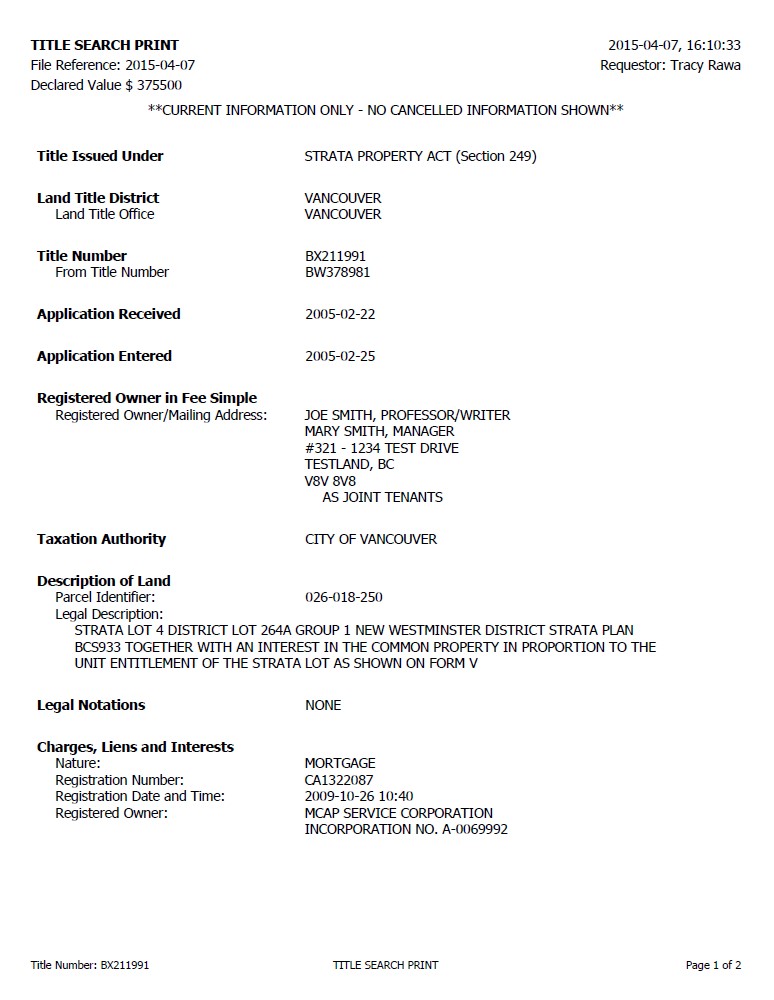Find Information on a Title
Ownership of lands, also known as fee simple ownership, is registered by registrars and examiners of title at the LTSA’s land title offices.
Upon the registration of fee simple ownership, a title to land is issued to the registered owner. The title lists the registered fee simple holder(s) (the owners), the legal description of the parcel, the Parcel Identifier (PID), any charges (see below), and legal notations registered against the title.
Types of Ownership Information
A person may be the sole owner of a parcel of land.
Alternatively, a person may be either a joint tenant or a tenant-in-common with one or more other persons.
Under joint tenancy, there is the right of survivorship. This means that if one joint owner dies, the surviving joint tenant(s) on proof of death acquires the deceased’s interest in the land.
When a tenant-in-common dies, that person’s share in the land goes to his/her heirs, not to the surviving tenants. If a person wants to be a joint tenant in a parcel, that fact must be stated on the transfer document and on the title, otherwise it becomes a tenancy-in-common. Talk to a legal professional if you would like more information.
How a Property is Described on Title
The property is described with a unique legal description, which usually consists of a lot number, various other descriptive numbers and a plan number. The property can also be identified by its unique nine-digit PID.
The address listed on title may or may not be the civic address of the property. Therefore, you cannot use a civic address to perform a title search through an LTSA account or at the land title office front counters. Civic address can be used to locate a parcel on ParcelMap BC which will then provide the legal description, PID and other information for a parcel.
Charges, Liens, and Interests
In addition to showing ownership information, a title shows legal interests or charges registered against the title.
These charges, otherwise known as encumbrances, must be formally registered against the title by the LTSA.
Some common charge types are:
For more information, see what is the difference between cancelled titles and cancelled charges?
Evidence of the Registered Owner's Interest
Once issued, a land title is evidence of the registered owner’s interest in the land. Historically, titles were recorded in register books of “absolute fees” or “indefeasible fees”. Today, title records are created and maintained on a secure computerized system.
LTSA employees, in accordance with BC’s Torrens system of land title registration, verify ownership each time a property or interest is sold or when interests are created such as leases, statutory rights of way, easements and restrictive covenants.
Sample Land Title
A PDF version is also available.

